 |
 |
 |
| |
Half of HIV+ Medicaid Users Have Poor Adherence, Driving Up Costs
|
| |
| |
9th IAS Conference on HIV Science (IAS 2017), July 23-26, 2017, Paris
Mark Mascolini
Analysis of 2683 Medicaid recipients found that half had poor adherence, defined as fewer than 80% of days covered [1]. Another 1 in 5 had suboptimal adherence, meaning 80% to less than 95% of days covered. This insurance claims study also found that poor adherence drives up health resource utilization and the cost of care.
Good antiretroviral adherence, which some research sets at 95% or higher, is essential for attaining and sustaining HIV suppression. Other work indicates that adherence poses a particular risk to low-income populations, like people who must rely on Medicaid for their health insurance. Researchers with Janssen Scientific Affairs and Montreal's Groupe d’Analyse aimed to address these issues and to assess the impact of poor adherence on health resource utilization and cost.
The researchers focused on claims made by adults in six states from 2012 through 2015: Iowa, Kansas, New Jersey, Missouri, Mississippi, and Wisconsin. The baseline period was the 6 months before the index date, and the index date was the date of the first claim for one of five key antiretrovirals: darunavir, atazanavir, raltegravir, elvitegravir, and efavirenz. Everyone had at least 6 months of continuous enrollment.
Health resource utilization included outpatient care, emergency room care, inpatient care, long-term care, home care, and other visits. The researchers defined proportion of days covered as "the sum of nonoverlapping days of supply of any antiretroviral agent during a fixed period of time divided by the length of the period." Optimal adherence meant a 95% or greater proportion of days covered, suboptimal adherence was 80% to less than 95%, and poor adherence was below 80%.
The analysis involved 2683 people with a median age of 46.6 years, 60.5% men, 55.2% black, and 64.9% living in an urban area. Almost one quarter, 74.2%, received no antiretroviral treatment during the 6-month baseline period. While 30% had optimal adherence, 19% had suboptimal adherence, and 51% had poor adherence. Multivariable analysis identified five independent predictors of poor adherence, at the following odds ratios (OR):
-- 18-29 years old versus 50+: OR 1.58, P = 0.002
-- Noncapitated insurance coverage*: OR 1.40, P < 0.001
-- Dual Medicaid and Medicare coverage: OR 5.98, P < 0.001
-- No antiretroviral treatment in baseline period: OR 1.98, P < 0.001
-- No HIV symptoms in baseline period: OR 1.37, P = 0.002
Compared with people who had optimal adherence, those with suboptimal adherence (1) spent significantly more days in the hospital (incidence rate ratio [IRR] 1.62, P < 0.05), (2) had more long-term care admissions (IRR 3.11, P < 0.05), and (3) had significantly higher average medical costs (mean monthly cost difference $339, P < 0.05), mainly driven by inpatient visits (mean monthly cost difference $259, P < 0.05).
The investigators cautioned that further research is needed to establish that poor adherence leads to virologic failure and resistance and thus to higher costs. They suggested that clinicians can improve adherence by considering fixed-dose combinations, especially those that include antiretrovirals with a higher genetic barrier to resistance.
*Noncapitated insurance is a managed care plan that sets no dollar amount to cover
the cost of services for a member during a specified period.
Reference
1. Dunn K, Lafeuille MH, Jiao X, et al. Adherence to antiretrovirals in Medicaid-insured patients living with HIV: predictors and economic consequences. 9th IAS Conference on HIV Science (IAS 2017), July 23-26, 2017, Paris. Abstract WEPED1418.




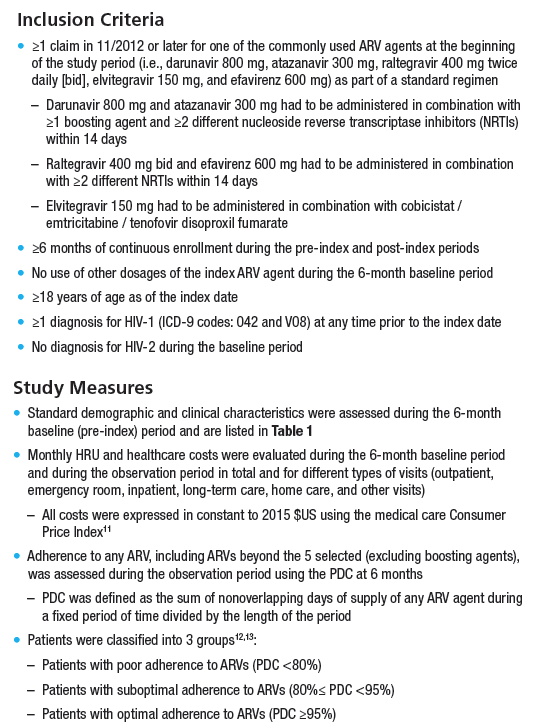
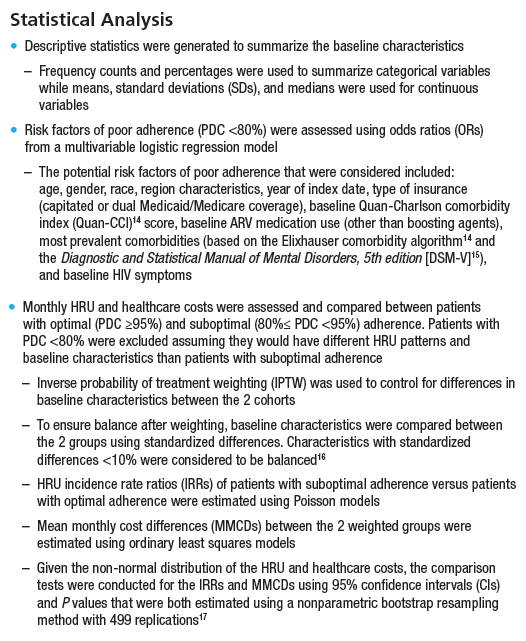
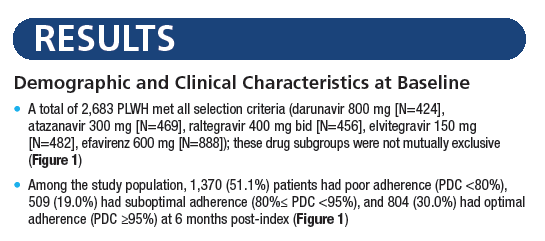
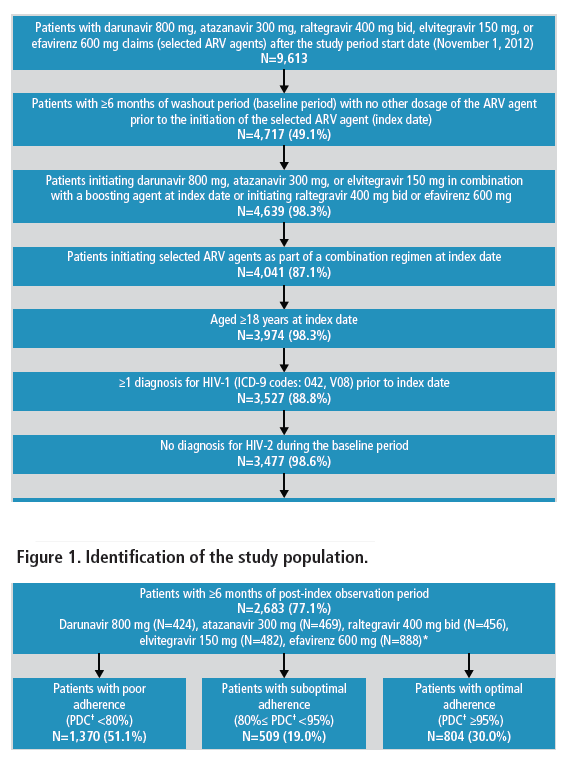
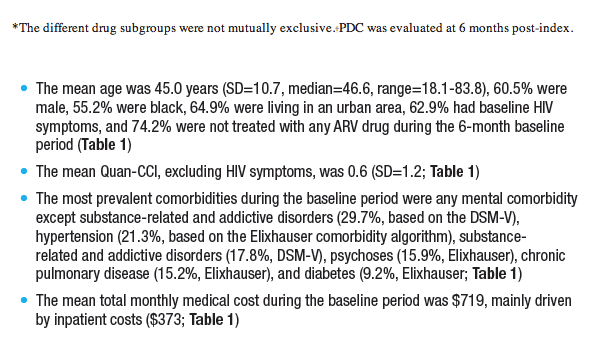
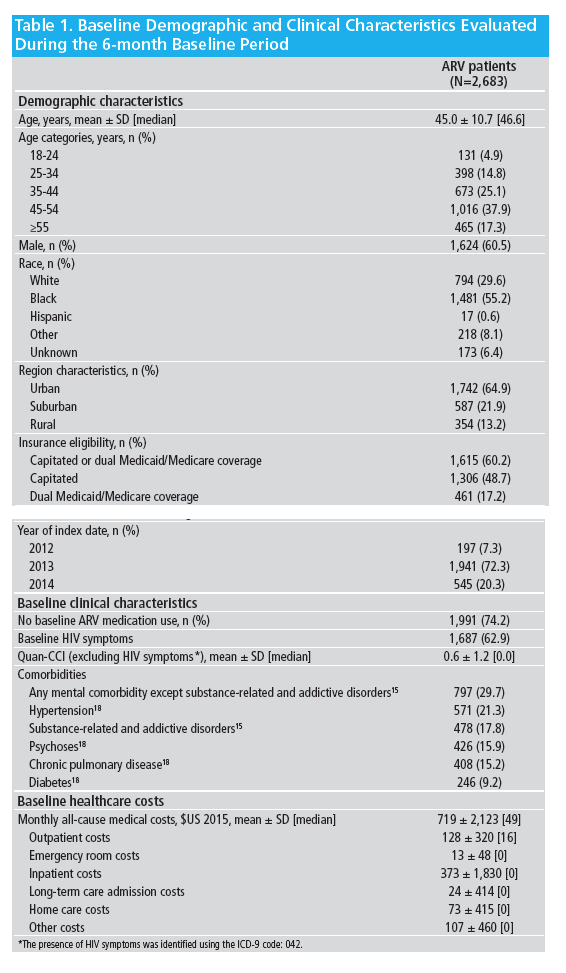
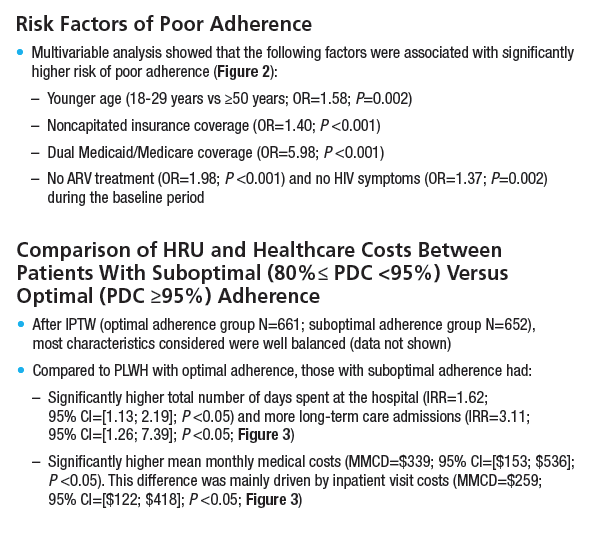
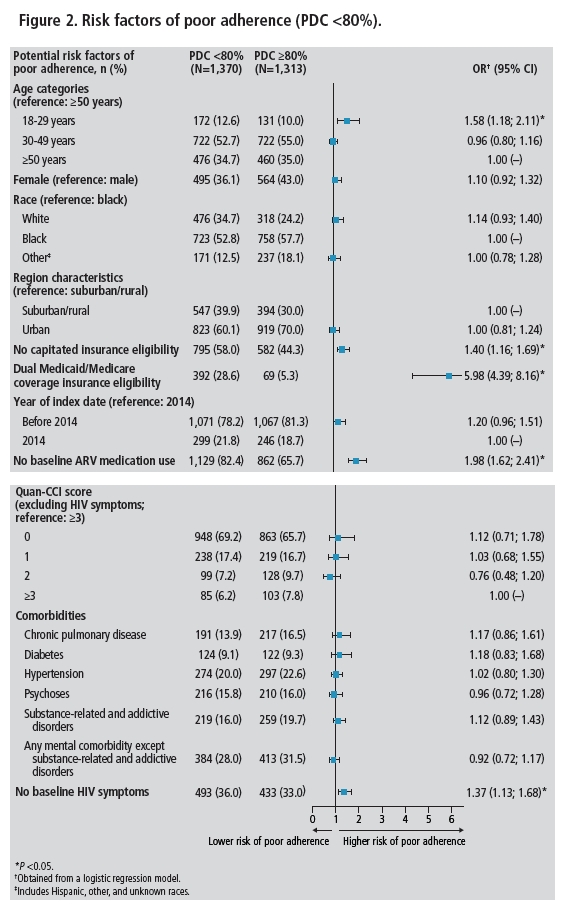
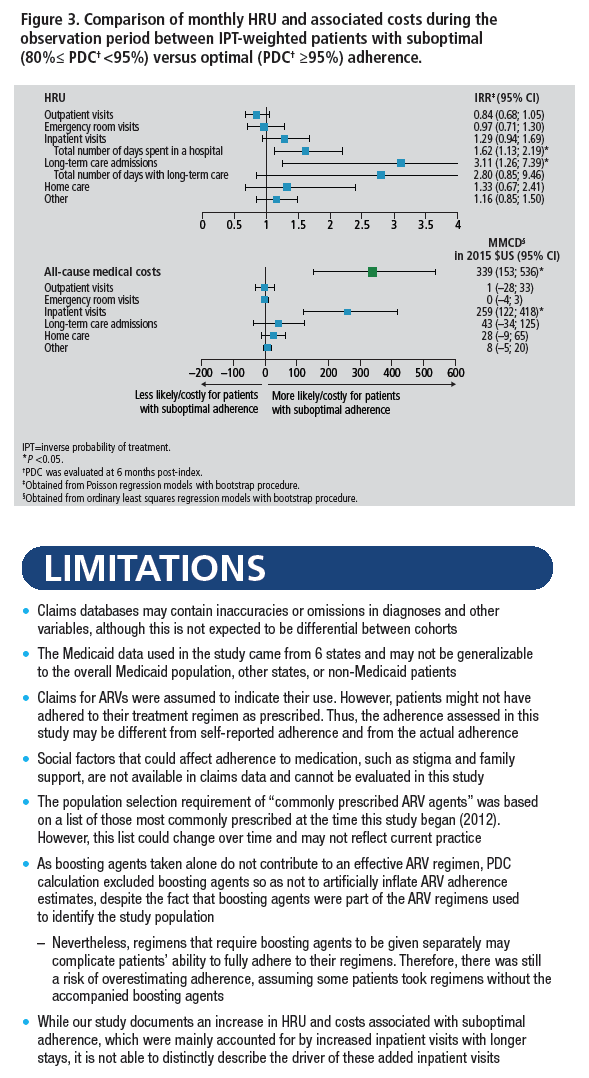
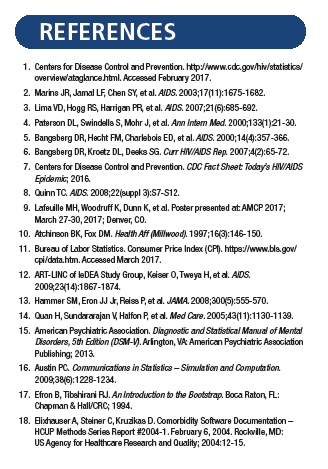
|
| |
|
 |
 |
|
|